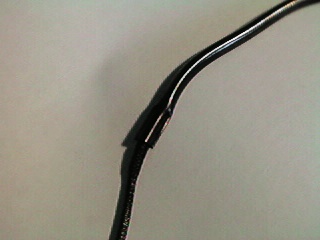

Thermometer Hell by Thor
I've always been a gadget freak. So the day I saw an article in Popular Electronic about a digital thermometer with a temperature alarm, I knew I had to have one. After calling the manufacturer and locating a local distributor, I quickly ordered the device and counted the days until its arrival. Two week later (and ~$35 dollars poorer), I had my own thermometer/timer/alarm with the catchy name the Exotec Model 401362 thermometer/temperature alarm.


I couldn't wait to use my new gadget on my brewery setup. Just think, to be able to effortlessly monitor the brew. As soon as I had the stove to myself, I started a batch of extract scotch ale and tested the thermometer. It seemed to work well while heating the water for the extract. I set the temperature alarm for 205 degree F and it rang perfectly when it hit the temperature. I removed the probe from the brew kettle and continued on my merry brewing way,
But all was not bliss in the brewing world as the title of this article suggests. I decided to use it again during the chilling phase so I could check how well my immersion chiller was progressing. After a few minutes of ever decreasing temperature, the meter shoot up from 130 degrees to well over 212! Had the laws of physics been tossed out with the boiling hops? As it turns out, the probe used to check the temperature isn't waterproof. Once water had gotten into the probe, the gadget inside (thermocouple) shorts out and the temperature part of instrument is kaput.
I tried a couple of fixes for the probe in order to resurrect my thermometer such as drying the probe out with heat and sealing a bit of solder but now luck (see illustration below).The only solution I could come up with that didn't make the probe look like hell was to replace the probe altogether with a water tight version.
In the meanwhile, its back to analog thermometers. At least the timer function still works.

Whats New | Brewery | New Draught Board | Comments | Home
Copyright 1997. No information contained in this document may be reproduced without express written consent of the author.
Last revised: September 14, 1997.